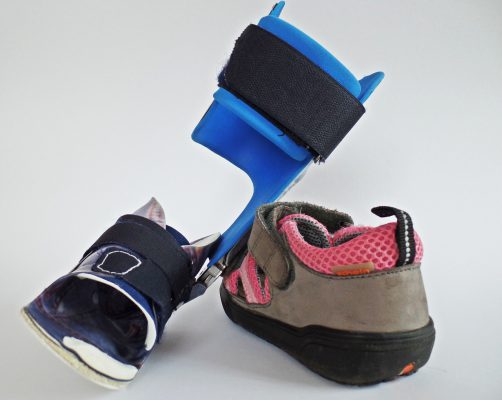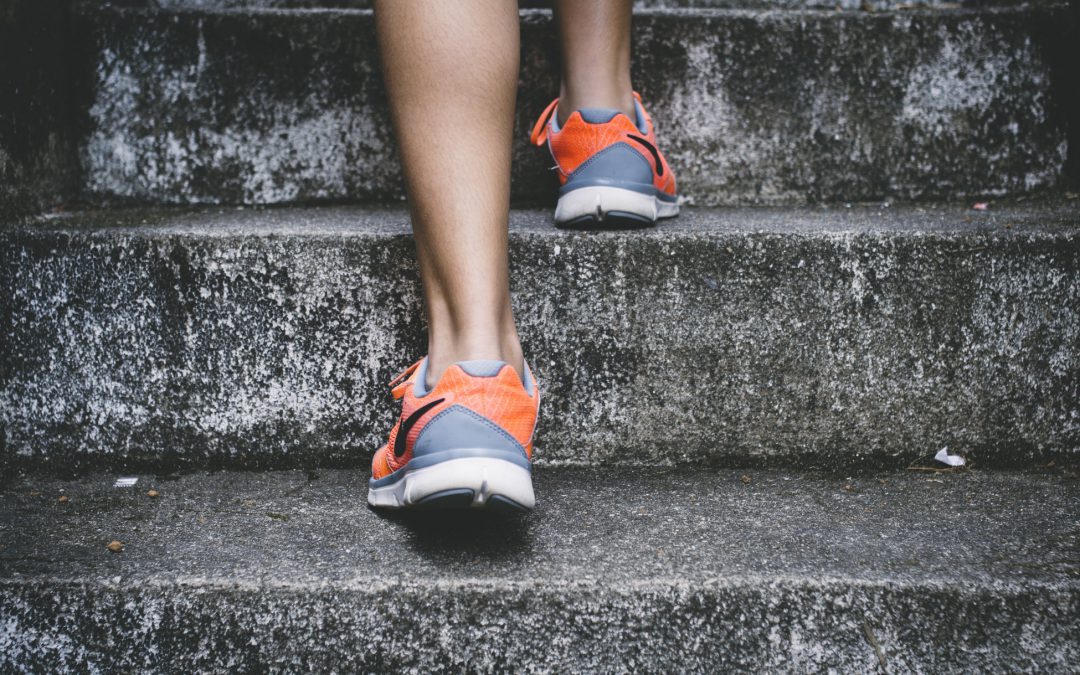The long, thin ligament on the underside of the foot that connects the toes to the heel is called the ‘plantar fascia’. It mainly functions as a shock-absorber and support for the arches of the foot.
The American Orthopaedic Foot and Ankle Society explains that too much pressure from weight, repetitive impact, flat feet or high arches can cause inflammation or microscopic tears in the ligament. They manifest as extreme heel pain or ‘plantar fasciitis’ – chronic pain that is often described as stepping on a thumb tack.
Sometimes plantar fasciitis is called “heel spurs”, but this is not always accurate, since bony growths on the heel may or may not be a factor.
Plantar Fasciitis is often recognized when there is heel pain that is present on first putting weight on your feet. This pain usually gets better with movement but returns again when you sit or lie down for even a few minutes.
Heel pain can put anyone from a pregnant woman to an athlete in extreme pain so long as the feet don’t get enough relief. Thankfully, plantar fasciitis can be alleviated through simple methods that you can do at home.
Natural Treatments and Exercises for Plantar Fasciitis
- Homeopathic Rhus Tox 30c taken twice a day can help relieve pain.
- Wear only shoes with good arch support.
- Try to avoid going barefoot during the healing process.
- Lose weight. Added weight adds extra pressure per square inch to the surface of the feet. Stretching the plantar surface of the feet are imperative for the healing process.
Stretch it out
These exercises are for stretching and strengthening the muscles of the foot and ankle.
Before you start these exercises:
Do a warm-up. Warm tissues are more flexible than cold tissues and are less likely to be injured. If you are participating in sports, it is very important to warm up and do stretching exercises before your sport. Warming up and stretching will increase the flexibility in your plantar fascia and decrease the chance of injury and inflammation.
Stretching exercises before getting out of bed:
Many people with plantar fasciitis have intense heel pain in the morning, when taking the first steps after getting out of bed. Stretching or massaging the plantar fascia before getting up can often reduce heel pain when rising. Other steps that can help reduce heel pain when taking the first steps after getting out of bed include:
Wearing a night splint while you sleep. Night splints hold the ankle and foot in a position that keeps the Achilles tendon and plantar fascia slightly stretched. Massaging the bottom of your foot across the width of the plantar fascia before getting out of bed.
1. Stretch your foot by flexing it up and down 10 times before standing. Use a towel to stretch the bottom of your foot. Stretching and strengthening exercises will help reduce plantar fasciitis each day.
2. Stretching exercises should create a pulling feeling, but not pain. Stretching exercises include: Use a rolling pin or tennis ball. While standing, roll the rolling pin or ball with the arch of your foot.
3. Use a towel (towel stretch). Place the rolled towel under the center of your foot, holding the towel at both ends, and gently push your foot into the towel.
4. Healthline conveys that tightly-wound muscles from the calf-down, intensify the pain of plantar fasciitis. Calf stretches. To stretch the Achilles tendon, lean forward against a wall, keep one leg with the knee straight and heel on the ground while bending the knee in the other leg. Hold this position for 10 seconds, and try to do this stretch 3 to 6 times a day.
5. Combination plantar fascia/calf stretch. Stand on a step with the front part of your feet, keeping your heels free. While holding onto the rail, slowly lower your heels. Hold this stretch for 10 seconds, then bring your heels back to a level position. Repeat this stretch 10 times.
Strengthening exercises include:
6.Towel curls. While sitting, place your foot on a towel on the floor and scrunch the towel toward you with your toes.
7. Marble pick-ups. Put marbles on the floor next to a cup. Using your toes, try to lift the marbles up from the floor and put them in the cup.

Do some low-impact exercises
While rest is of the utmost importance for those afflicted with heel pain, it is not necessary to forgo working out completely. Cycling, swimming, yoga, and strength training are still permissible in this condition. Most of the time, plantar fasciitis is an effect of obesity so getting regular exercise to reduce your weight might help address one root of the problem.
Exercises to avoid
Some exercises may aggravate your heel pain. One example is exercise that involves pounding of the foot against a hard surface and repeated motions, such as running or jogging. This type of exercise should be avoided to rest the plantar fascia.
Pain Relievers
You may want to take a pain reliever such as a nonsteroidal anti-inflammatory drug (NSAID), such as aspirin or ibuprofen, to relieve inflammation and pain. Some people take NSAIDs at least 30 minutes before they exercise to relieve pain and allow them to participate and enjoy the exercise. Other people take NSAIDs after they exercise. After exercising, ice your heel for about 20 minutes to help relieve pain and inflammation. You can easily become dependent on NSAIDS. Be careful. Bleeding gums, ulcers or any other kind of excess bleeding could be a sign of too much NSAIDs intake.
Shop for some orthotics
Not all feet are the same, which is why custom foot supports or orthotics were invented to make your shoes work for your benefit. Patient.info suggests that fitted insoles prevent the feet from excessive rolling inwards (overpronation) or outwards (underpronation), which increases the risk of developing heel pain. For people who stand or walk at work all day, heel pads or heel cups can also be worn inside the shoes for additional cushioning.
Rest on an ice pack
Cold therapy is effective in shrinking swollen superficial tissues to its normal condition as well as numbing the painful region. Find anything that can work – frozen peas, ice cubes wrapped in a towel, or an ice pack – and rest your foot on it for 10-20 minutes up to two times a day. Make sure that your feet have warmed up a bit before completely icing them, so it’s ideal that you do it later in the day after you have some movement going.

Sleep with night splints
You can even work on lessening the pain from your condition overnight. A night splint is an adjustable brace that you can put around your affected foot while you sleep. WebMD explains that it works by allowing the calf and plantar fascia to stretch by keeping the toes pointed up. In this position, the stress on the inflamed region is minimized and the pain might be more manageable in the morning.
Massage it with a golf ball
Self-massage with a golf ball is a popular remedy for heel pain that you can do at work or at home. Simply sit on a chair and place your foot on top of the ball. Roll your foot over it forward and backward applying enough pressure that you still feel comfortable and you feel the pain diminishing.
Plantar fasciitis can be an irritating problem that you have to deal with which can take weeks or months to heal completely. The important thing is to listen to your body and allow it to heal with time and use safe and easy steps that you can take on your own.
These suggestions have worked for me and my patients. You must be diligent about this as well as losing weight if you’re overweight. It will make all the difference in the world.


 Fill out the form below to sign up to our free natural health and healing newsletter and stay up to date on our latest articles about holistic healing therapies and effective home remedies for common ailments. As a thank you for joining our newsletter, we’ll also send you
Fill out the form below to sign up to our free natural health and healing newsletter and stay up to date on our latest articles about holistic healing therapies and effective home remedies for common ailments. As a thank you for joining our newsletter, we’ll also send you